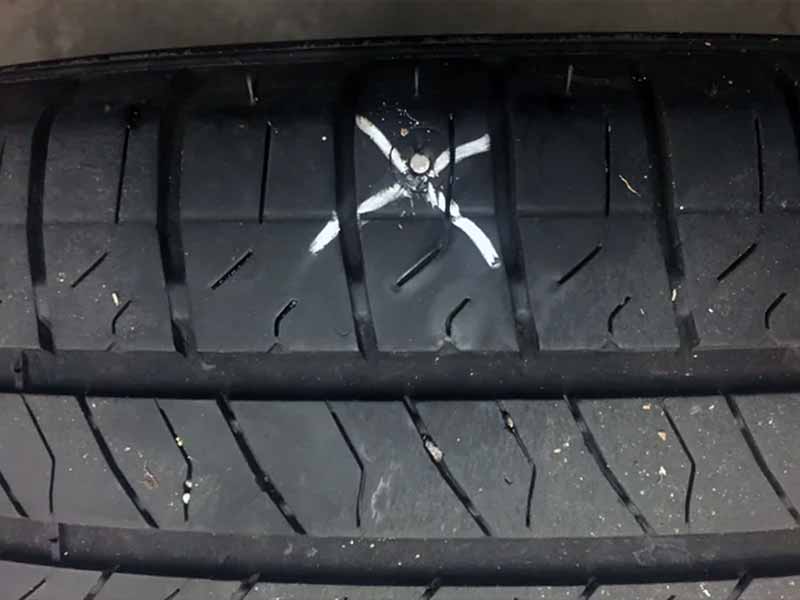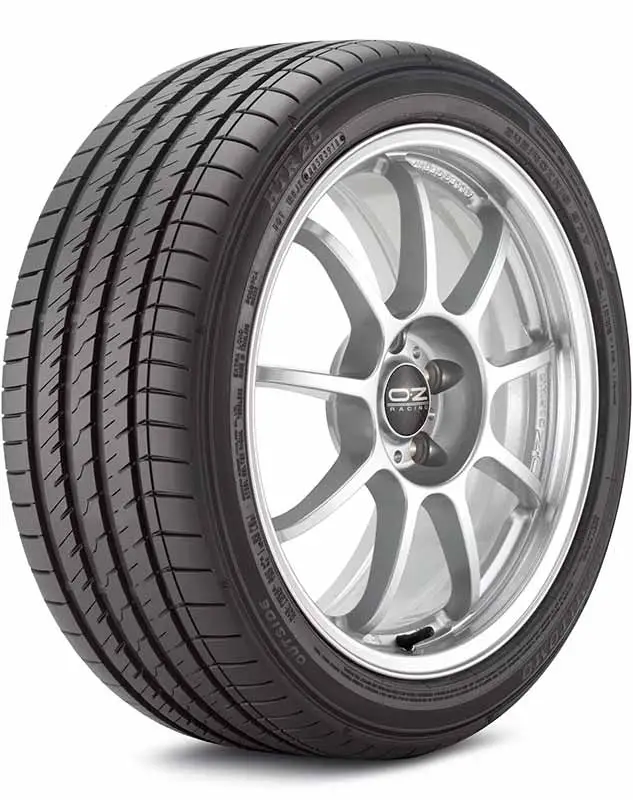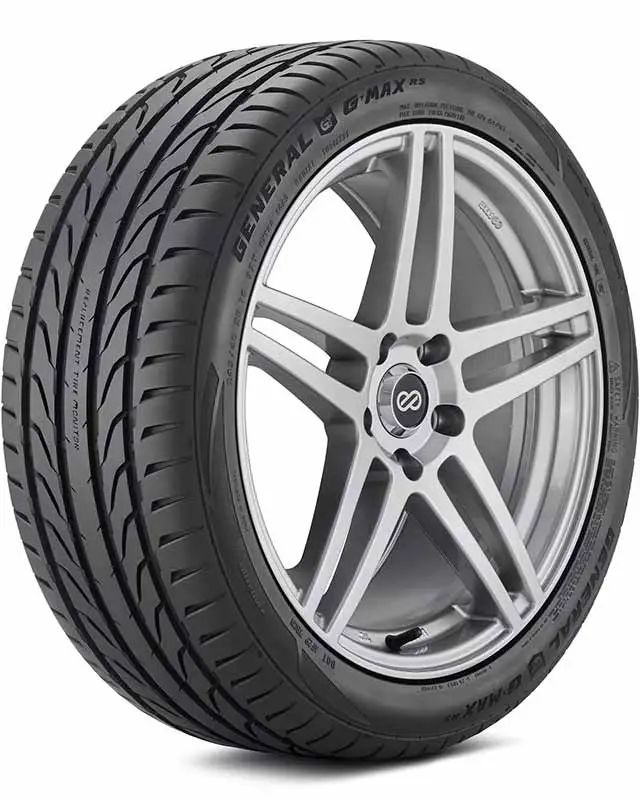Ever found yourself on the road with a punctured tire, wondering if that quick plug fix is enough for your long journey ahead? It’s a common scenario that raises many questions about safety and reliability.
Can I Drive Long Distance With A Plugged Tire?
Yes, you can drive long distances with a plugged tire, but it is advisable only as a short-term solution and under certain conditions, like reduced speeds and regular tire checks.
In this article, we explore the intricacies of tire plugs versus patches, delve into the safety considerations of driving with a plugged tire, discuss speed limits and risks of blowouts, and provide essential tips for long-distance travel and tire maintenance.
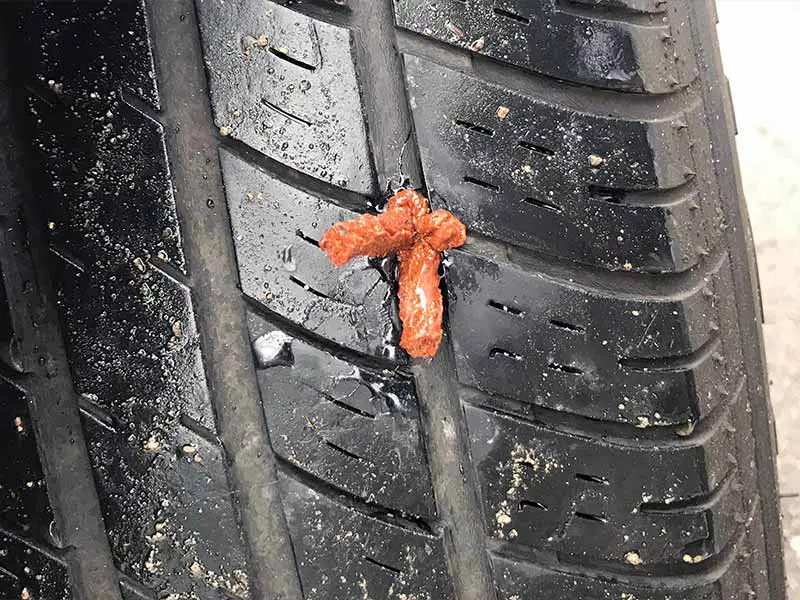
Understanding Tire Repairs: Plugs vs. Patches
When you’re faced with a punctured tire, you essentially have two roads to travel down: plugging or patching. Now, let’s dive into what these two mean for your wheels.
Tire Plugs: The Quick Fix
- What Are They? Tire plugs are rubber strips used to fill puncture holes. They’re inserted from the outside and are great for small, straightforward punctures.
- Ease of Use: Plugging can often be done without removing the tire, making it a convenient roadside fix.
- Durability: A well-placed plug can last a significant amount of time, but it’s not a permanent solution. For more on the longevity of tire plugs, explore how long a tire plug lasts.
Tire Patches: The Thorough Approach
- What Are They? Patches are applied from the inside of the tire to cover the damaged area completely.
- Efficiency: Patching is more labor-intensive and usually requires professional help. It’s best for larger or irregular holes.
- Reliability: A patch is more reliable than a plug, as it’s designed to meld with the tire, offering a more secure fix. Discover the details in our guide on tire plug vs patch.
Which to Choose?
Deciding between a plug and a patch comes down to the nature of your tire’s injury. Plugs are your go-to for quick, temporary fixes on small punctures. Patches, on the other hand, are your best bet for a more secure and lasting repair, especially for larger damages. Remember, it’s not just about patching up the problem; it’s about ensuring your safety on the road.
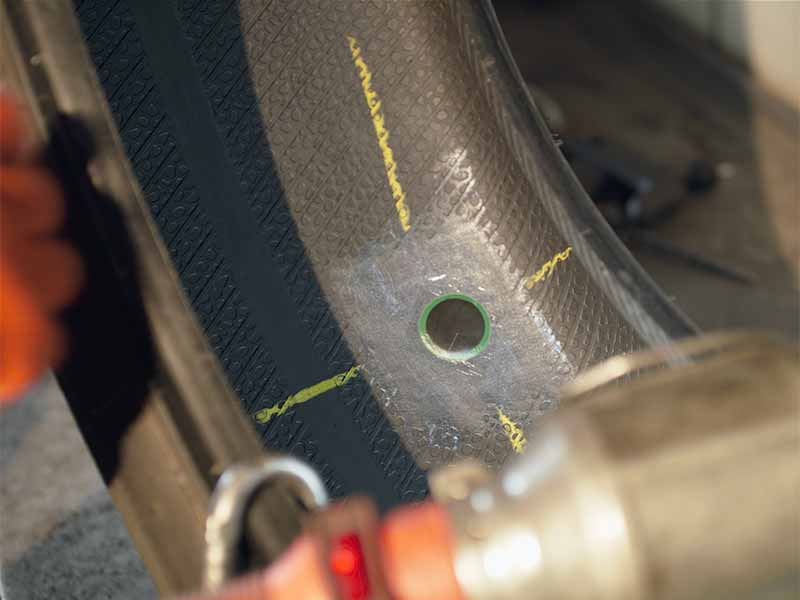
Safety Considerations for Driving on Plugged Tires
Let’s shift gears and talk about the safety of cruising on a plugged tire. It’s a common concern, and rightly so, because your tires are what keep you rolling safely down the road.
Is Plugging a Tire Safe?
- Short-term Solution: Plugging is generally safe for a short period. It’s a quick fix meant to get you to a professional for a more permanent solution.
- Inspect Regularly: Keep an eye on the plugged tire. Regular checks are crucial to spot any changes or issues early.
Factors Affecting Safety
- Type of Puncture: Safety depends on the puncture’s size and location. Small, clean punctures in the tread are typically okay for plugging.
- Quality of the Plug: A poorly done plug can compromise tire integrity. Always opt for professional services when possible.
The Role of Speed
Driving style and speed significantly influence the longevity and safety of a plugged tire. Excessive speed can increase the risk of a plug failing. So, take it easy and avoid pushing your tire to its limits.
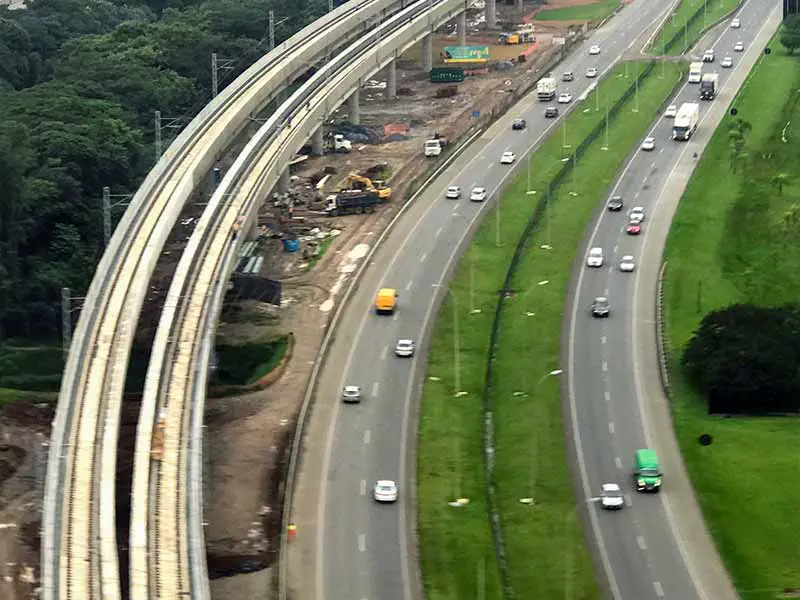
Speed Limits with Plugged Tires
When it comes to driving with a plugged tire, speed is more than just a number on your dashboard—it’s about safety. Understanding how fast you can go with a plugged tire is key to preventing further damage and ensuring a safe ride.
Keeping Speed in Check
- Reduced Speed: It’s wise to drive at a reduced speed with a plugged tire. Think of it as giving your tire a break and not pushing it to work harder than it needs to.
- Why Slow Down: High speeds increase heat and pressure on tires. With a plug, this can weaken the repair and risk a blowout.
When to Hit the Brakes
- Monitor Your Tire: If you notice any unusual vibrations or the tire feels off, it’s time to slow down and check.
- Professional Advice: Consult a professional for their recommended speed limit on a plugged tire. They can provide a more precise guideline based on your specific tire and plug.
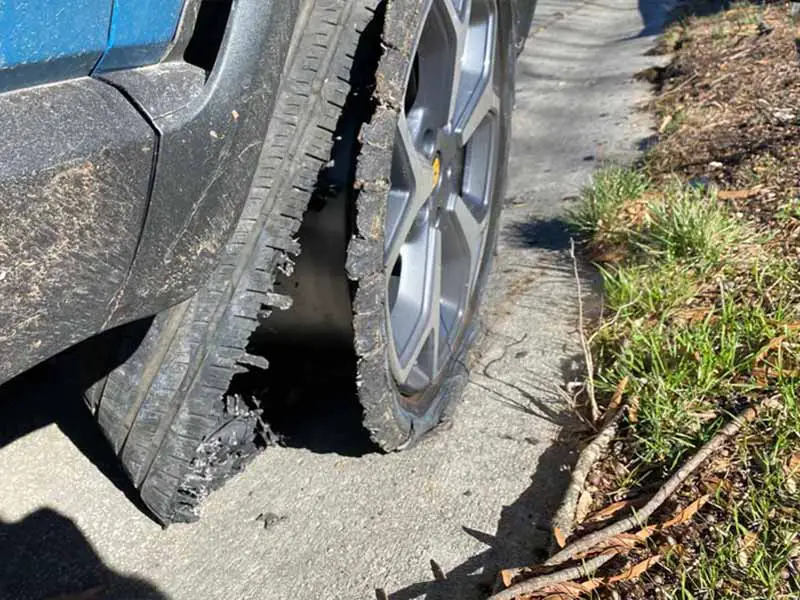
Risk of Blowouts in Plugged Tires
Understanding the risk of a blowout is crucial when driving on a plugged tire. It’s about knowing what can go wrong and how to prevent it.
What Increases Blowout Risk?
- Age and Condition of Tire: Older, more worn tires with plugs are at a higher risk of blowout.
- Improper Installation: A plug that’s not installed correctly can fail, leading to a blowout.
Preventing Blowouts
- Regular Checks: Frequently inspect the plugged tire for signs of wear or damage.
- Avoid Stressing the Tire: Keep your load light and avoid rough roads to reduce stress on the plugged tire.

Long-Distance Driving on Plugged Tires
Planning a long journey with a plugged tire? Let’s navigate through what you need to know for a safe trip.
Suitability for Long Journeys
- Temporary Solution: Remember, a plug is a temporary fix. For long distances, it’s preferable to have a more permanent repair.
- Distance and Tire Health: The health of your tire and the distance of your trip are key factors. If your tire is relatively new and the plug is professionally done, longer trips might be safer.
Safe Travel Guidelines
- Pre-Trip Inspection: Thoroughly inspect the tire before setting off. Look for signs of wear or damage.
- Plan for Stops: Regularly stop to check the tire during your journey.
- Emergency Preparations: Have a spare tire and the necessary tools on hand, just in case.

Best Practices for Tire Maintenance
To keep your tires in great shape and reduce the likelihood of needing emergency repairs, follow these best practices:
Regular Maintenance is Key
- Routine Inspections: Regularly check your tires for wear, damage, or any signs of issues.
- Proper Tire Inflation: Keep your tires properly inflated according to the manufacturer’s specifications.
When to Replace Tires
- Tread Depth: Monitor the tread depth. Tires should be replaced when they reach the wear indicator.
- Age of Tires: Even if they look okay, replace tires that are too old as recommended by the manufacturer.
Keeping up with these practices not only prolongs the life of your tires but also ensures your safety on the road. By staying proactive about tire maintenance, you can avoid many common tire issues.
Resources
Below are some links you may find helpful when learning about tires:
- Tire plugs and patch repair: How long do they last – CarParts.com
- How long can you drive on a plugged or patched tire? – Your Mechanic
Final Thoughts
Driving with a plugged tire can be safe for short-term use, but it’s crucial to be cautious. Regular inspections and mindful driving, especially at reduced speeds, are key to ensuring safety.
Remember, plugs are temporary fixes and should be treated as such. For long-distance travel, consider a more permanent repair solution.
Prioritizing tire maintenance, such as keeping an eye on tread depth and proper inflation, can significantly reduce the chances of tire damage and the need for emergency repairs.
Good luck and happy motoring.
